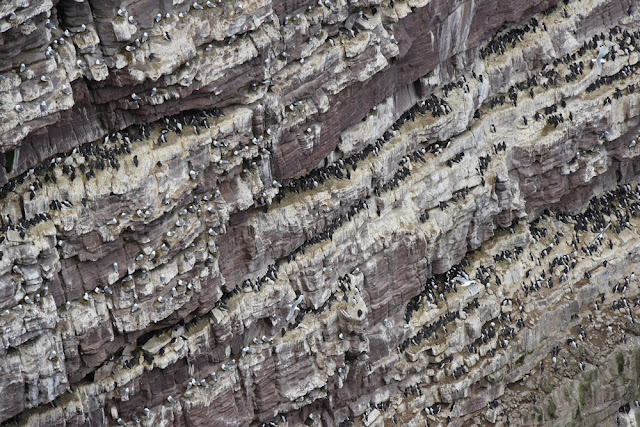Handa
I took a boat trip out to Handa last week, an island just offshore of the Sutherland west coast. The view above is of the island as seen from the shore at Tarbet, the ferry port. It's a low island, the highest hill only reaching 123m, but the northern and western sea cliffs are pretty spectacular.
The island is composed of Torridonian Sandstone, an ancient red sedimentary rock which has been weathered and battered by waves for millenia, to form deep geos and tall sea stacks.
The Great Stack is home to thousands of seabirds, as are the rest of the cliffs, and the setting at the mouth of a geo adds perspective to its height, which I couldn't find out, but must be about 40-50m.
Guillemots pack along the narrow ledges, several birds deep in places, and Kittiwakes perch their nests on even smaller ledges. Razorbills select to nest singly in small crevices or under boulders.
Many people go to the island to see Puffins, and there are some there, nesting in burrrows on the grassey ledges or cliff tops, but I spent my time watching the Fulmars gliding along the cliffs, flight perfected. They also nest on the grassy ledges near to top of the cliffs, so good views can be had of them without having to look down on tiny specks as with the Guillemots. Many of them were sitting in pairs, some would have had single eggs beneath them, but I never saw any. And they will be there til september, when their single chicks finally leave the nest, or rather their simple scape on a ledge.
They might only be simple scrapes on ledges, but what a neighbourhood to grow up in.
One Fulmar stalls in flight as it passes over another.
Then on the walk back to the ferry, the view was of the magnificent sandstone peaks of the Assynt hills on the mainland. An easy rewarding day.
The island is managed as a nature reserve by the Scottish Wildlife Trust .








No comments:
Post a Comment